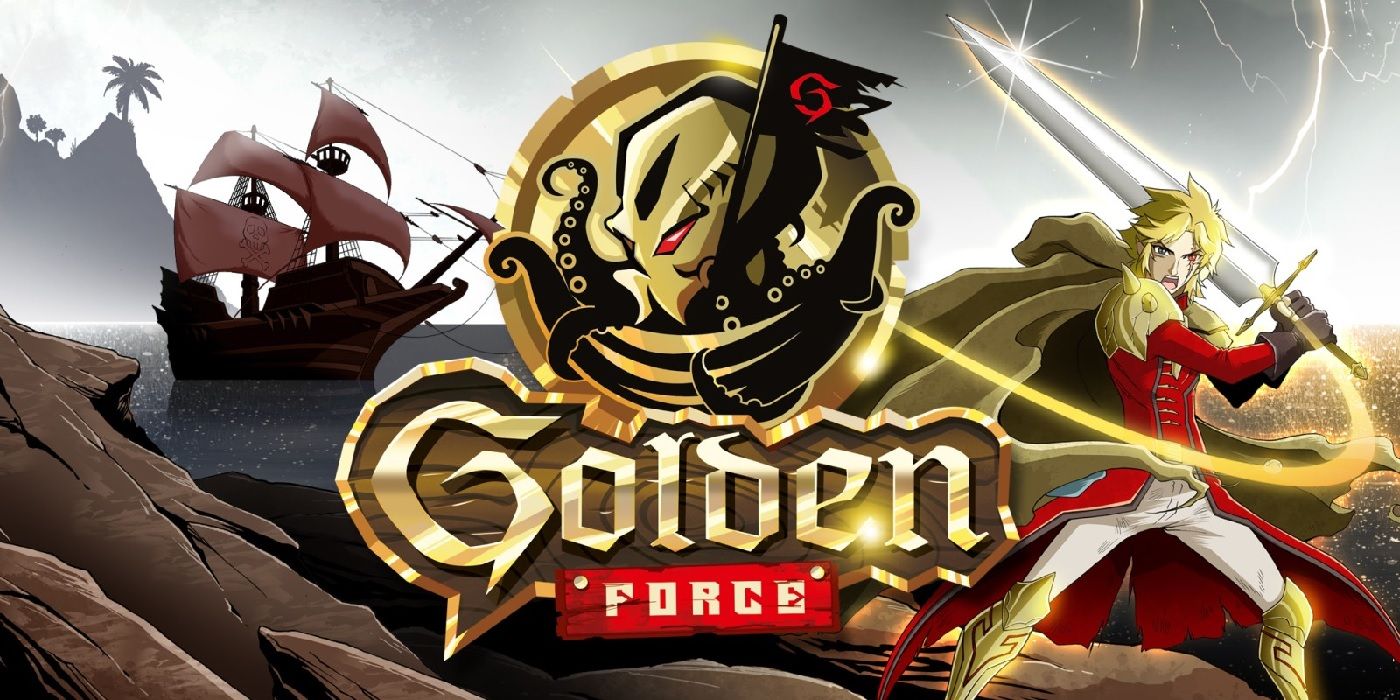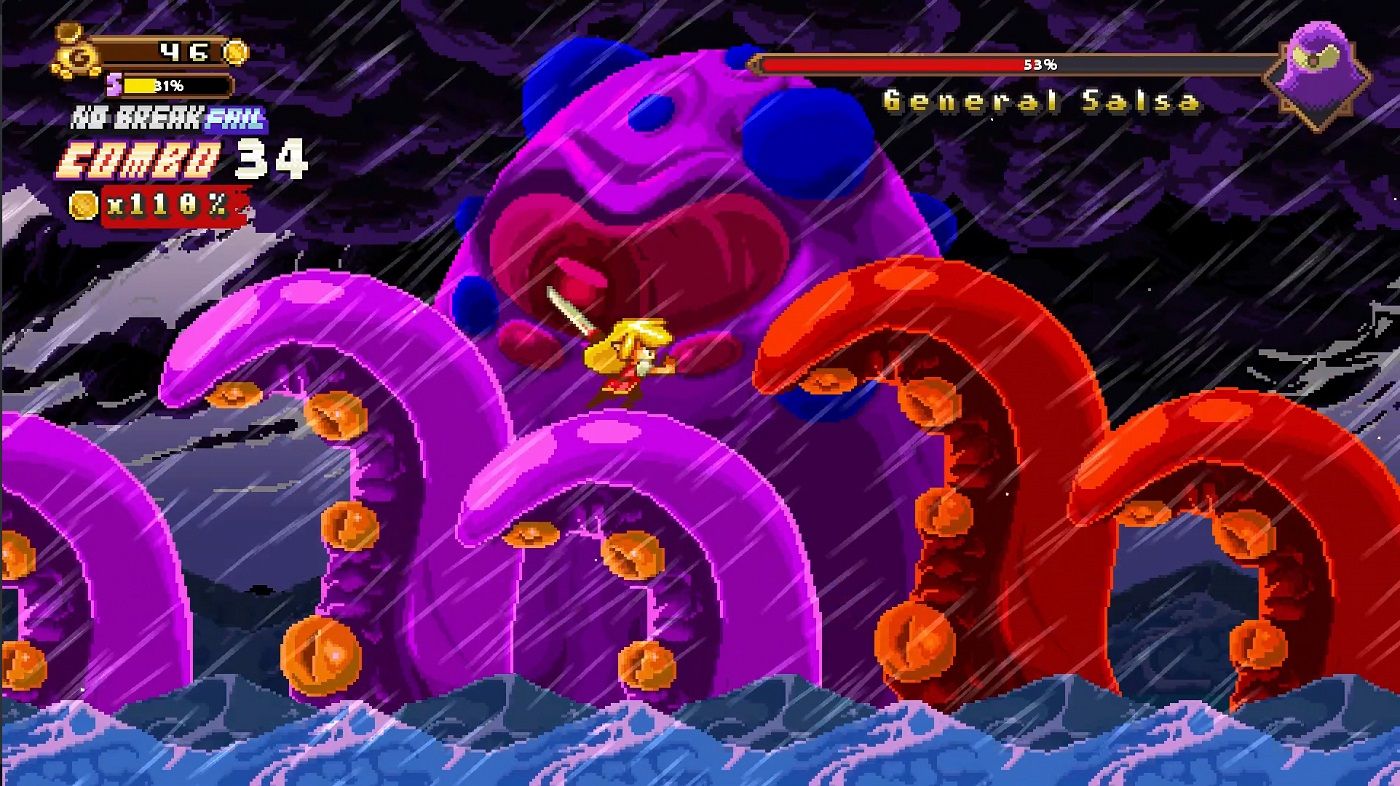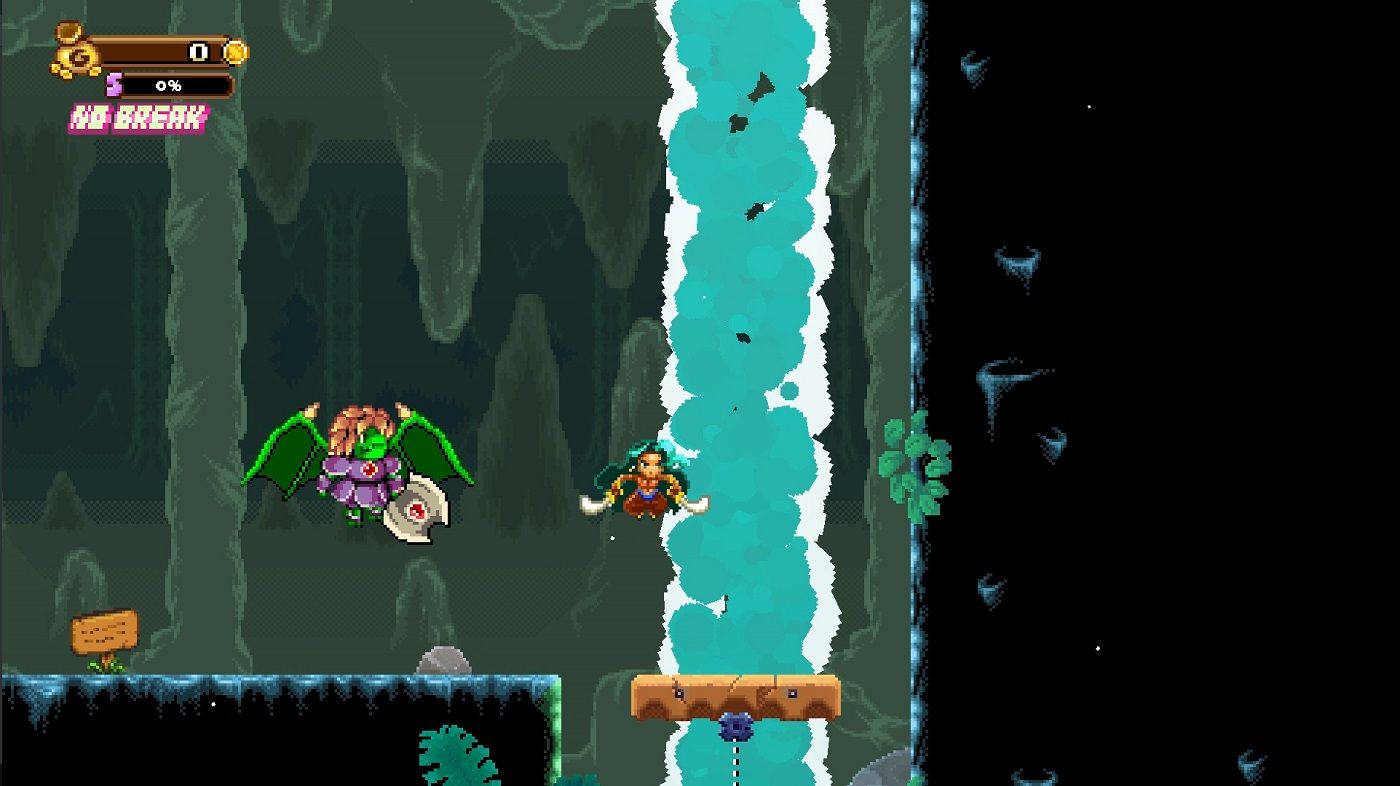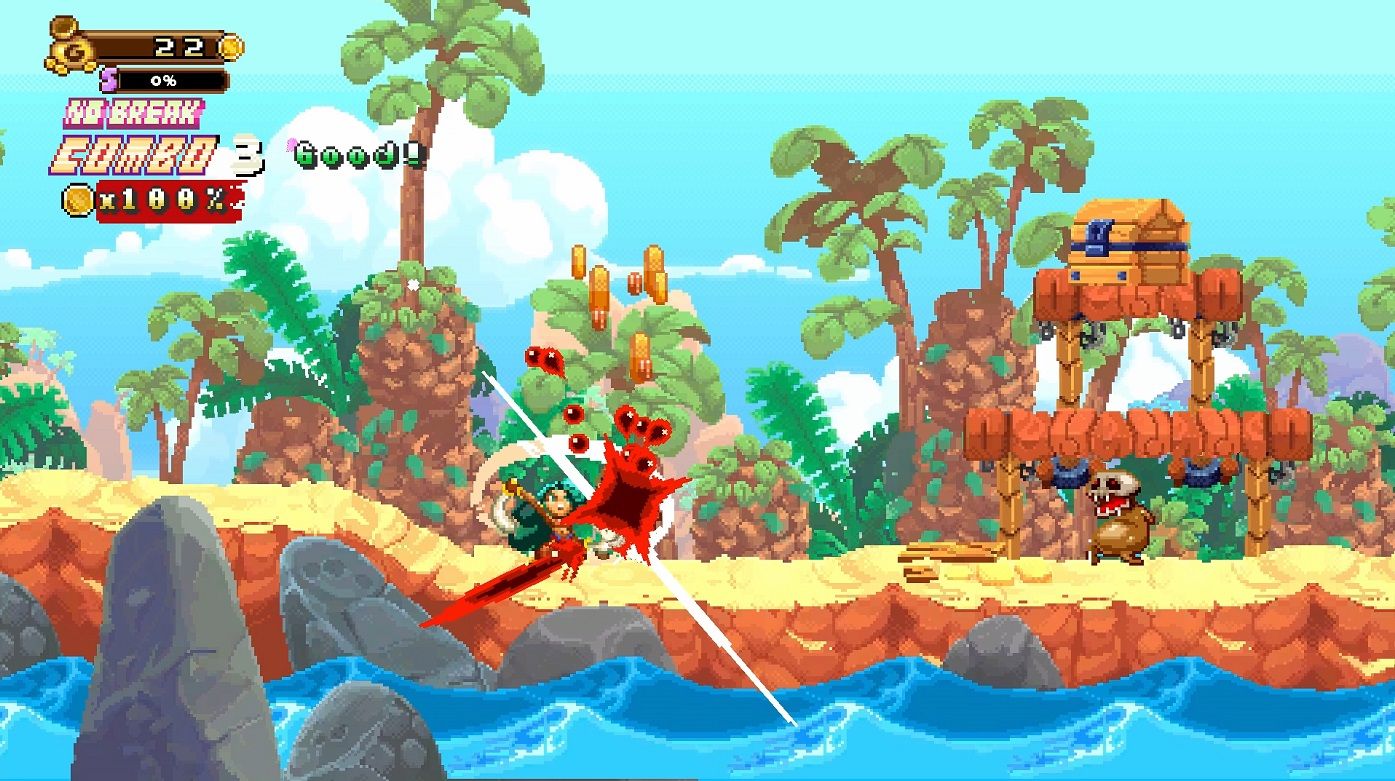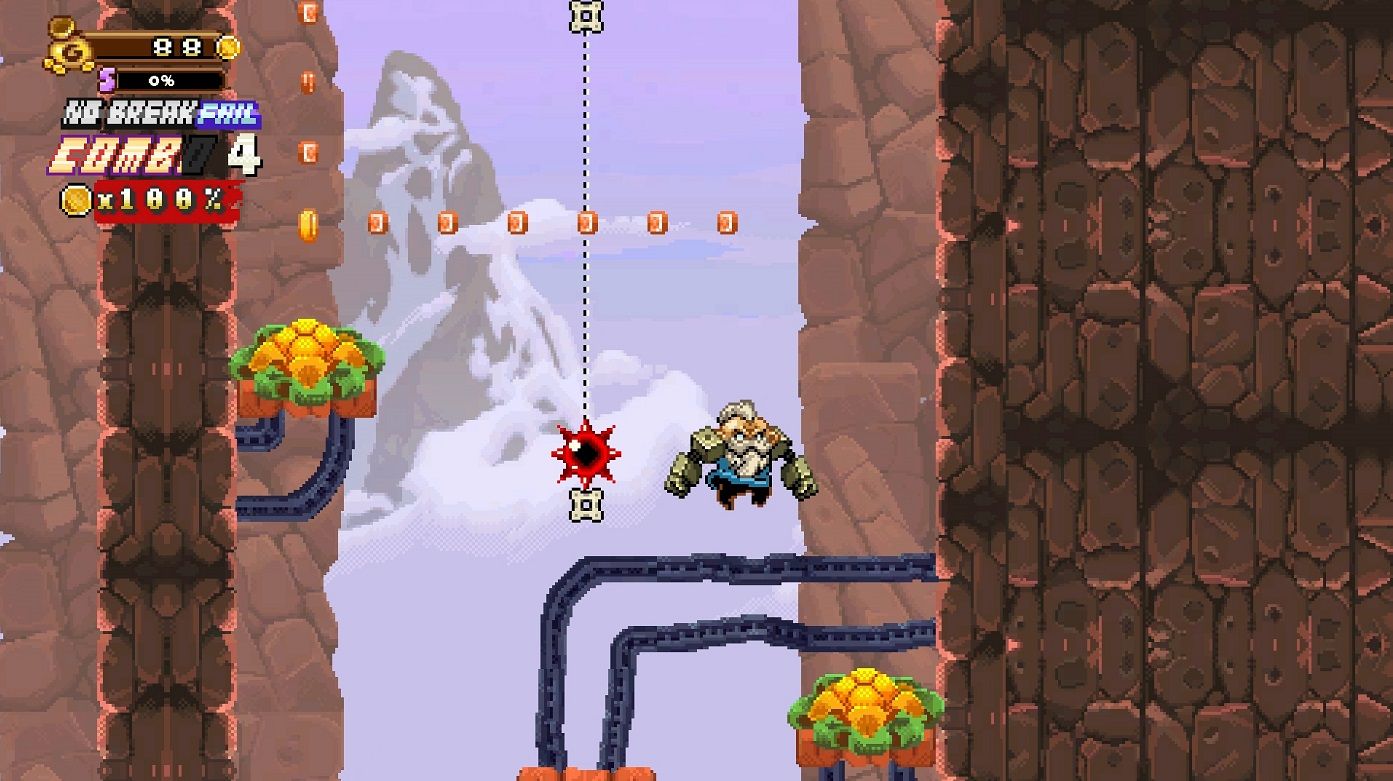Since indie games have much smaller budgets to work with when compared to their triple-A counterparts, it's not uncommon for them to use games from the 8- and 16-bit generation for inspiration. Oftentimes indie games utilize a 16-bit art style, while also emulating the general gameplay and high level of difficulty of the classics. Golden Force is one such game, but instead of making players yearn for the games of yesteryear, it's more likely to make them grateful for how far the industry has come.
Like many of the 16-bit era games that inspired it, Golden Force prides itself on its extreme level of challenge, to the point where players will most likely die while trying to complete the tutorial. Golden Force throws players into the fire immediately, having them fight a Kraken-like boss with a meaty health bar and numerous ways to kill the player. While it seems harsh, this is actually a decent way for players to learn the tricks they'll need if they hope to survive the game's increasingly difficult levels, and it certainly sets the tone for what's to come.
There is nothing wrong with a game having a high level of difficulty like this. In fact, some of the most critically-acclaimed games on the market are defined by their challenge, ranging from big-budget games like FromSoftware's Dark Souls franchise to titles that have more in common with Golden Force, like Cuphead. But where Cuphead and the Dark Souls games are widely considered tough but fair, Golden Force is the farthest thing from "fair."
Many deaths in Golden Force will be thanks to cheap tricks like projectiles coming off-screen or the game quite literally dumping players right on top of enemies. The camera has a tendency to hide things, meaning players often have to get through levels by trial-and-error, which quickly becomes tedious. But what pushes Golden Force's difficult platforming and combat from tedious to unbearably frustrating is its many severe technical issues.
Golden Force has a serious frame rate problem, at least on the Nintendo Switch version, where things slow down to a crawl. Usually, this happens when there's a lot of action on the screen, but sometimes it happens for no apparent reason. This robs the game's otherwise punchy combat of its impact and makes certain platforming challenges significantly more difficult. And unfortunately, it's 10 times worse when playing Golden Force's local co-op mode.
Golden Force's local co-op mode is broken in its current state. It makes the already poor frame rate even worse, and it throws in a nauseating camera for good measure. Instead of the camera pulling back like it does in most other games, it only focuses on one player, allowing the second player to go off-screen. A blurry circle then pops up to give the second player an idea of where they're at, but it's too small to really be useful in any significant way. The result is that players have to constantly babysit each other's movements to keep the camera from bouncing around and so the other one doesn't get lost off-screen.
Design decisions like these make the co-op feel like it was tacked-on without much thought. There are some parts of Golden Force that seem literally impossible to complete for the second player, with the game sometimes not allowing them to hang on to ropes that they need to climb or having them fall through air gusts that they need to use to cross wide gaps. In other instances, the second player will simply disappear when starting a new level.
The bulk of Golden Force's many technical issues are most apparent when playing in co-op, but many glitches impact both single-player and co-op. The air gust glitch is in both modes, forcing players to restart the level if they want to continue. Another glitch sees the characters freeze in place when trying to use their super move. And players will also notice that there are placeholder names in place of level titles, which, combined with the litany of other issues, makes Golden Force feel unfinished all around.
If Golden Force wasn't weighed down by its technical problems, the actual game would have been an occasionally entertaining (if completely unremarkable) 2D action platformer. There are fleeting moments of fun when the frame rate cooperates, with simple but challenging combat and plenty of interesting enemy designs that help the game stand out a bit from the many other 2D platformers on the market.
Golden Force's greatest quality is its enemy designs, with even the low-level enemies given some thought. There are fat-bellied zombie creatures that rush at players head-on, as well as armored, three-headed snails. Players also have to contend with odd, sloth-like bears that have a ton of health and can deal damage with both their claws and the tentacles that randomly pop out of their backs.
The boss fights in Golden Force are something to look forward to, if only to see what new design the developers dreamed up, even though actually fighting the bosses can be a miserable experience. Some of the early Golden Force bosses include the aforementioned Kraken that players fight in the tutorial, as well as a giant shark-mech and a massive robot ape. These boss fights are designed to completely overwhelm players, as it sometimes takes four to five hits to deal one damage point to each boss's hefty health bar, and the screen is often filled with all kinds of deadly projectiles and obstacles.
Perhaps Golden Force could have achieved the same feeling of games like Demon's Souls where defeating these bosses is a rewarding experience, but the game's technical problems keep that from happening. Players don't feel like they've conquered the bosses when they defeat one of them in Golden Force; they feel like they've gotten lucky and overcame the poor frame rate.
The game may have also been more rewarding to play had there been an incentive to grind prior to fighting bosses, but Golden Force's economy is wildly unrewarding. The most important upgrades, like additional health and longer combos, can only be purchased with the limited collectible coins, as opposed to the massive amount of treasure that players collect in each stage. The basic treasure is instead used to buy limited-use powerups, which don't provide enough of an edge to really be worth the investment and only seem to work half the time. There are many instances in Golden Force where players will try to pull up their inventory screen, only for the game to refuse to do so for whatever reason.
Golden Force's only replay value is hunting down the collectible coins in each stage as well as unlocking the bonus levels, but doing this means putting up with freezes, glitches that make progress impossible, and many other headaches. The four playable characters, which range from a humanoid dragon armed with an axe to an old man with mechanical arms, all seem to play more or less the same, and so there's no point in replaying the game as a different character.
Golden Force makes too many missteps to recommend it, especially on the Nintendo Switch. It's entirely possible that other versions of the game run better, as was the case with Bloodstained: Ritual of the Night when it first released, but that remains to be seen. But even if the game ran perfectly, Golden Force would still be saddled with an unrewarding progression system and frustrating level design meant to bombard players with cheap deaths. Those looking for their retro gaming fix should look elsewhere.
Golden Force launches January 28 for PC and Nintendo Switch. Game Rant was provided with a Switch code for this review.

